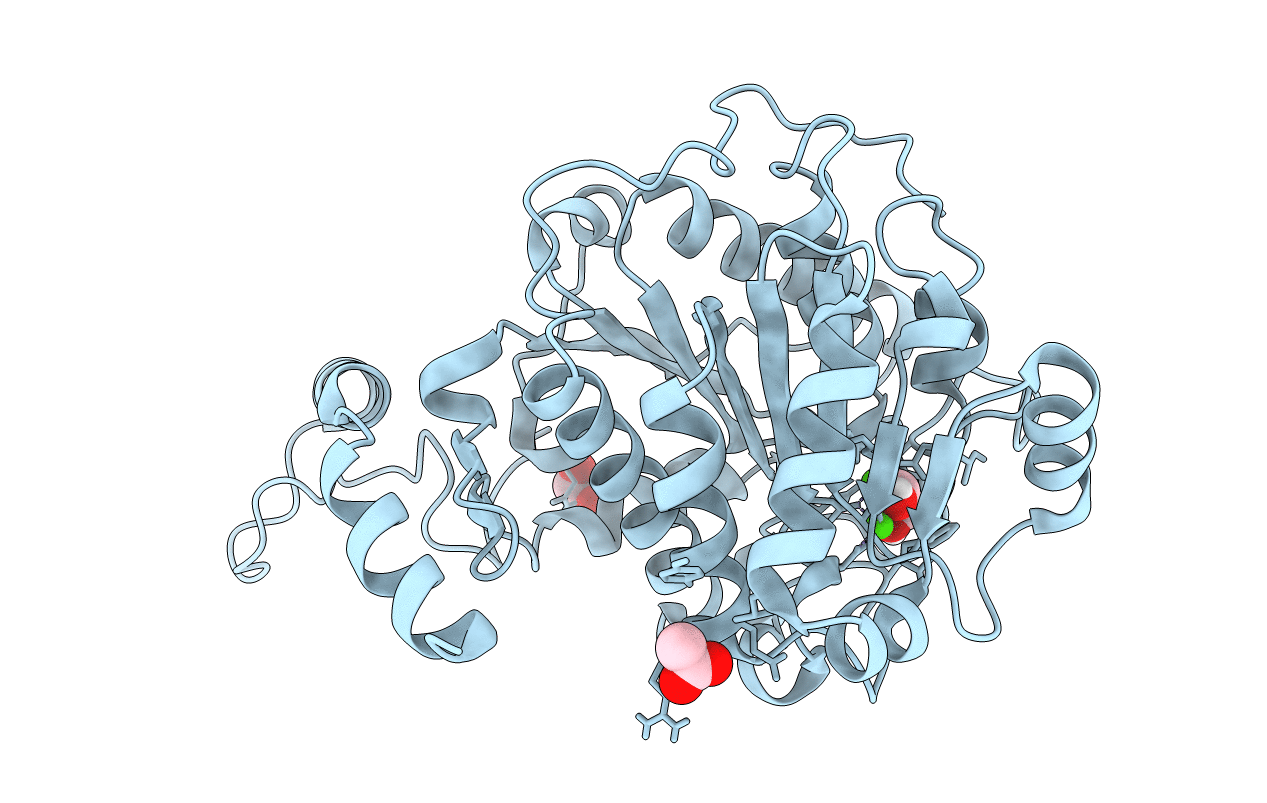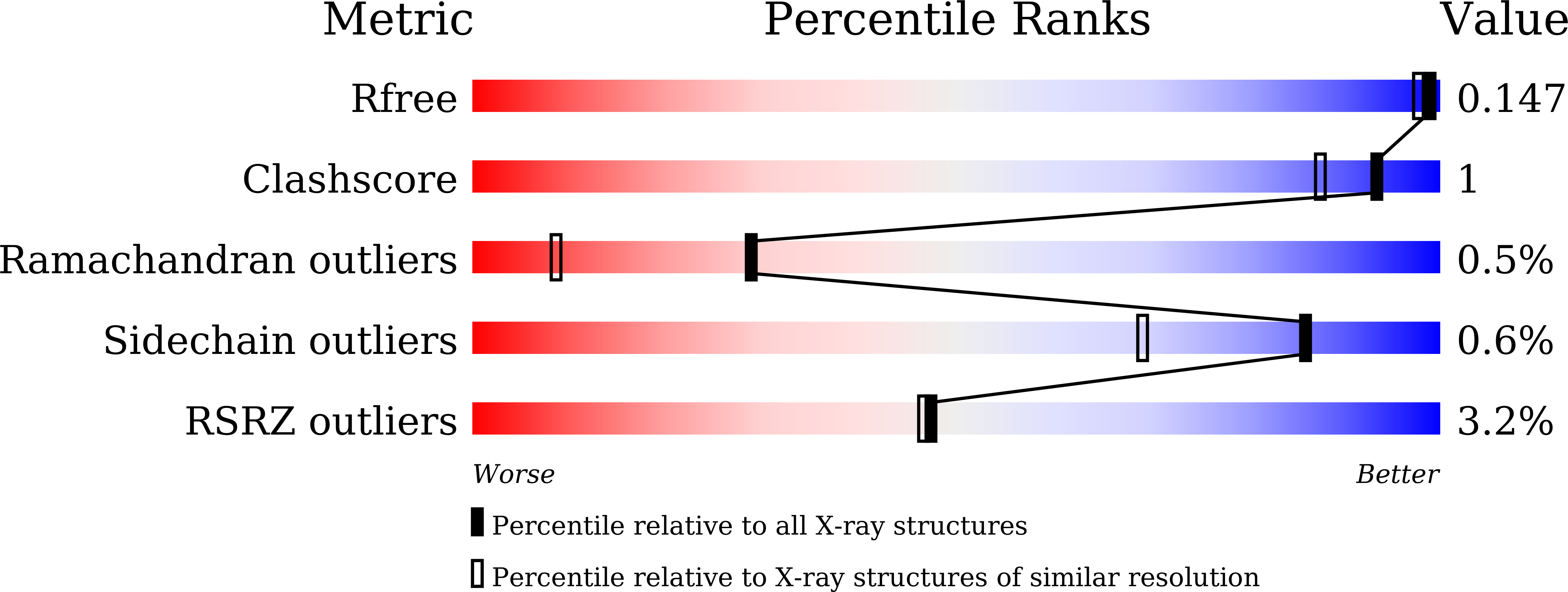
Deposition Date
2021-05-11
Release Date
2021-12-15
Last Version Date
2023-11-29
Entry Detail
PDB ID:
7ESR
Keywords:
Title:
Crystal structure of Synechocystis sp PCC6803 guanidinium hydrolase (R32)
Biological Source:
Source Organism:
Synechocystis sp. PCC 6803 (Taxon ID: 1148)
Host Organism:
Method Details:
Experimental Method:
Resolution:
1.42 Å
R-Value Free:
0.14
R-Value Work:
0.13
R-Value Observed:
0.13
Space Group:
H 3 2


